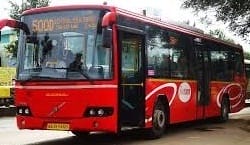
Half the city of Bengaluru travels using 6,500 buses. The other half uses 55 lakh vehicles. This data points so obviously to what we should be doing, but unfortunately, we insist on spending enormous amounts of money supporting private transport, and less than one-tenth of it supporting public transport and sustainable options.
The illogic of financing urban mobility is that it is easy to get 30,000 crores for a full Metro system, or 1,000 crores each year endlessly for road-building, but we struggle to get 50 crores a year for footpaths and refuse to spend 200 crores for a Bus Rapid Transit system that could be operational in six months – because we prefer planning for Metro Phase 5 in that space in 2040.
Rupee for rupee, the bus is the best bet we can make. Tripling the bus fleet would remove at least 5 to 8 lakh vehicles from the roads, bring regular bus service to within 500 metres of every house, considerably improve air quality, and probably not cost more than 400 crores a year in subsidies. And all of this could be achieved in 18 months!
I was at a discussion Manyata Tech Park on January 28th to talk about potential solutions to the mobility challenges in the area. A number of options were put on the table – better access from all directions, carpools, better skywalks, a high speed off ramp from ORR, etc. – and we’ll probably try all these. But the thing that will make the most difference is a flood of bus services and safe walkability from the stops around the campus into it.
Somehow we keep missing the bus. The financial and other costs of this keep piling up, but so far the fascination with large infrastructure projects, and endless rounds of road-laying continues to dominate the government’s thinking about urban mobility.
This post was first published on Ashwin’s Facebook page.
Related Articles
BMTC’s fares are the highest compared to many cities in india, but they still complain of running in loss. As an individual, expense on a two-wheeler works out well from both comfort as well as budget wise, then why choose bus. BMTC has to think about its fares before expecting people to opt for buses. People who use it do out of no option.
My opinion on suggestions by Ashwin Mahesh his suggestion that:
Bus transport (BMTC) is not us d by commuters.This is because that travel by BMTC buses take longer journey time.
Only solution is Rapid Rail transit by Metro, Mono Rail and L.R.T.
BMTC should use mini buses on heavy traffic areas and not big buses which cannot move easily on congested roads.
Bus Rapid system possible only if it is planned in new suburban developments.
Stating that tripling bus flect will remove 5 to 8 lakh vehicles from roads is not correct as it is not possible for the existing number of buses to move on congested roads in the City .
Car pools will not be practical in view of security risks in this city with increasing crimes.
Car pools as the commuters have different destinations will not be convenient .
-Dr. A. S. Kodanda Pani,
Urban Planner & Civic Analyst